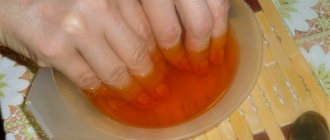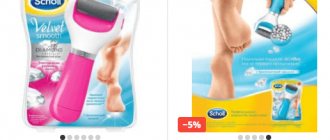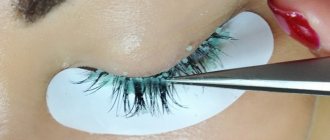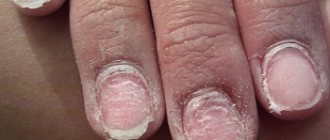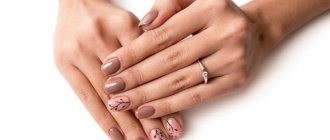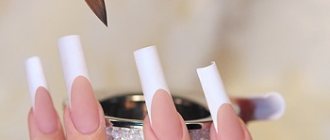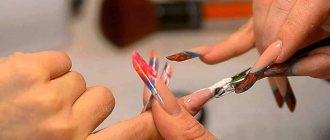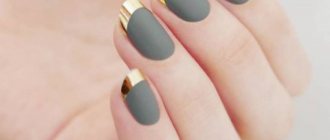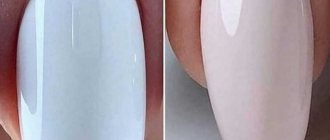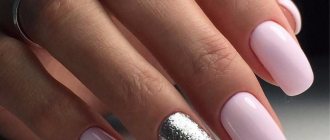What is nail polishing
Nail polishing is a special procedure for treating the nail plate, after which the nail acquires a healthy, well-groomed appearance, a smooth surface and shine.
In addition, this procedure promotes rapid growth of nails. It is necessary to eliminate surface unevenness and helps with damage and dull shade of the plate. Polishing should be carried out no more than two or three times every month. It should be noted that this procedure is not recommended for brittle, fragile nails that are susceptible to lamination. In such a situation, it is initially necessary to bring the nail plate into a healthy appearance using strengthening agents and baths. You can also replace polishing weakened nails with wax. In this case, the polishing file can only be used when sealing the nails. An effective remedy for peeling nails using a soft polishing file is polishing with essential oils.
In general, it should be noted that experts do not recommend polishing even the strongest nails too often. Maximum once every 1-2 months.
How to use a nail polishing machine?
When working with a machine, first of all, it is worth distinguishing between two categories: grinding and polishing. You can polish no more than once every 6 months, but polishing is acceptable with each subsequent manicure.
Remember that if your nails are weak or brittle, polishing is contraindicated!
But at the same time, it is worth noting that grinding is not only a cosmetic effect, but also the prevention of all kinds of fungi, infections and bacteria. The stratum corneum (dead layer) is too pliable for all microbes and is often a breeding ground for infections.
How to use a nail polishing machine?
Before you start polishing with a machine yourself, carefully study the instructions, distribute the nozzles according to abrasiveness and hardness. After this, carry out the procedure according to the training video, changing the attachments to softer ones if necessary.
Types of polishing files
There are many types of polishing files: special polishing files, polishing blocks, buffs. There are professional files that are made of durable materials with a long service life. They can be washed and disinfected. They are certainly suitable for home use too. If you care about the health of your nails, it is better to choose a professional tool. It will cost more, but it will last longer and will not harm your nails.
Polishing files
Special polishing files are most often sold as a set. This includes files with different abrasiveness. For convenience of the procedure, they are usually numbered.
Files with rubber surface
This file option is best used for wax polishing. In addition, they are used for fragile and weakened nails.
Paper file
The base of this file is made of cardboard or multi-layer paper and processed in a certain way. On top it is covered with spraying, for which granite, quartz or Teflon chips are used. This file can be used in salons, as a disposable tool, and for personal use - reusable. The impossibility of reusable use of this file in salons is due to the fact that it cannot be disinfected.
Plastic file
Often, accessories for manicure are quite expensive. A plastic polishing file is an exception in this case. This inexpensive but easy-to-use file is made from foam or regular plastic. This manicure tool can be used to correct thin, fragile nails. It has the characteristics of gentle and non-harsh processing. Plastic files are simply washed and treated with special disinfectants. The variety of assortment and budget price of such a file allows you to choose it for every taste.
Glass file
The glass nail file is loved by many representatives of the fair sex. Its gentle material helps to gently treat and polish your nails. Another advantage of this manicure file is the possibility of long-term use. The only thing is that it is quite fragile and can easily break, therefore, it must be handled with care and preferably stored in a case or case.
Ceramic file
The abrasiveness of its base will facilitate soft, gentle polishing, which will remove all the scales. The ceramic file is also fragile and is usually sold in a special case. If handled with care, it can be used for a very long time.
Laser file
Relatively recently, a tool for treating nails has appeared in stores, with which you can not only polish and shape nails, but also get rid of cuticles. This tool is a laser file. Its base is coated with diamond, but its main distinguishing feature is the presence of small grooves. The small holes look like honeycombs and, unless you look closely, are not particularly visible. Treatment with this nail file will be soft and gentle. It is used for polishing, getting rid of cuticles and removing the rough layer of skin on the sides.
Buffs
Files are in the form of a bar, having two or four working edges, varying in degree of abrasiveness. Often the edges come in different shades and are numbered. Buffs are made from various materials: fabric, suede, polyethylene foam. The disadvantage of buffs is the impossibility of disinfection due to the properties of the material; therefore, they are used at home.
Electric files
In addition to regular polishing files, there are also electric ones. The most popular of them are Scholl, Kemei, Gezatone. They operate on batteries and have several speed modes. The set usually includes several attachments for various purposes. This is a coarser nozzle for forming a plate, a medium coarse one for sanding nails, and the softest for polishing. Electronic files make nail treatment easier and help you achieve the same results as in salons.
In addition to polishing the nail surface, it is convenient to polish the cuticle with similar electric clippers. You just need to be careful not to damage it.
Abrasiveness
Manicure files have another distinctive characteristic - abrasiveness. This is the rigidity of their working basis, which is measured in special units - grits. They show the number of abrasive particles on a specific surface area of the tool. Based on this indicator, files are divided into softer, more gentle and rougher. Let's look at the main categories of polishing files based on this characteristic:
- From 250 to 400 grit. This indicator characterizes the soft surface of the base. Used for polishing.
- From 400 to 850 grit. Very soft. Used for more gentle polishing.
- From 850 to 1200 grit. The softest. Buffs usually have this abrasiveness. Used for polishing and giving a glossy shine to the plate.
How to choose a polishing file
It is especially necessary to select a file carefully for those who have weak, flaking nails. A wax polishing file is best for them. It can be purchased in specialized stores.
Hard files, below 240 grit, are suitable only for extremely rare use - once every six months. With more frequent use, the nail plates will deteriorate, become thin and brittle.
If you have strong nails, give preference to files with an abrasiveness of 240 - 400 grit. For polishing weakened nails - 400 - 500. Use tools with higher abrasiveness for the final stage of polishing and giving a glossy shine to the surface.
How to use a nail file correctly
You need to know how to use a file correctly. During the procedure, the instrument is held on both sides: with the help of the thumb it is held on one side, and with the index and middle fingers on the other. It is necessary to process the nails, moving in one direction from the edge to the middle; during the procedure, the file must be held at a small angle relative to the plate.
And a few more rules:
- You should choose a polishing file with a soft foam base;
- When polishing, you must hold the file with your fingers on both sides, pressing lightly and evenly over the entire surface. Then it will cover the entire nail;
- In order for the effect of polishing to be maximum, that is, so that after the procedure the nails not only look, but also remain healthy, you can first apply a little nourishing cream or suitable essential oil for nails to the nail plate;
- Thanks to polishing, the subsequently applied varnish will lie smoother and last longer.
What and how to polish nails
In beauty salons, masters offer delicate polishing with special pads (they are called buffs), which have varying degrees of abrasiveness. In addition, the procedure is carried out with various grinding compounds with extracts of medicinal herbs, as well as laser files.
At home, you can use glass polishing nail files, the same buffs with an abrasiveness of 300 grit or more, or wax. An alternative is a special machine for hardware manicure with a suitable cutter (attachment).
There are double-sided and block buffs. A convenient tool for home use is a buff with multi-colored edges, each of which symbolizes a sequence of actions. You can remove noticeable deep grooves on the nail plates using coarse-grained edges, and finish sanding with a fine-grained abrasive.
There are several types of buffs:
- with a polyethylene foam base;
- fabric;
- suede (suitable for caring for long natural nails).
Nail polishing files are also available with varying degrees of abrasiveness. Thus, a tool with a coating of 300–400 grit is suitable for polishing small defects, and you can give the nail plate a mirror shine using a file with a coating of at least 900–1000 grit.
Useful tips for polishing your nails
Nails must be prepared for work - remove the polish, degrease, and shape. Warm baths for hands (feet) will make subsequent manipulations easier - they will soften the skin and make it easy to remove (push back) the cuticle.
Polishing technique is of great importance:
- It is necessary to work with a buff (file) very carefully, without putting excessive pressure on the plate;
- movements are carried out from the center to the sides of the nail, always in one direction;
- First, one side of the plate is processed, then the second.
Sanding and polishing
Polishing and buffing of nails is recommended only if they are not weak and brittle. Otherwise, their condition may worsen. After processing, it is necessary to cover the plate and the skin around it with cream or oil.
Perform polishing
To ensure that the surface of the nail plate is perfectly smooth and shiny, it must be polished. For this type of processing, a buff or a special polisher is used. Polishers are available in the form of bars or files with a suede or abrasive working base. The suede tool makes the surface smooth and shiny. Cream should be applied to it before the procedure. Oil must be applied before polishing with abrasive files. They, like suede ones, smooth the surface and give it shine. The file must be moved across the surface of the nail; you cannot make circular movements. Polishing is carried out a maximum of two to three times a month.
Polishing stages:
- Soft sanding. It is necessary to remove moisture, eliminate yellowish tints and unevenness. It is carried out using a file against the growth of the nail.
- Primary polishing. Smoothes scales, eliminates micro-scratches and unevenness. It is carried out with a stiffer polishing file in the direction of growth of the nail plate.
- Secondary polishing. It is made with a softer file for final leveling and giving a glossy shine to the plate.
- And at the end of the procedure, the nail is lubricated with a nourishing moisturizing cream or oil and rubbed into the surface.
You can polish your nails not only on your hands, but also on your feet. The polishing process for a pedicure is the same as for a manicure.
Why and how to polish
First of all, you need to know that polishing nails is carried out not only for their beautiful appearance, but also for health, since in the process of creating a glossy appearance, blood begins to circulate better, which in turn leads to their growth.
That is why, in order for your nails to have a beautiful and healthy appearance, they must be polished. However, quite often you should not resort to rubbing your nails until they shine as they can become fragile. It is enough to carry out this process no more than 1-2 times a month. The grinding process consists of several stages:
- Surface grinding (soft). It helps remove the moisture that they produce from the nails and speed up the process of renewing their layer. Also, using soft sanding, you can remove the unsightly yellow color of your nails and make them more even.
- Primary polishing. It removes small scratches and evens out the keratin layer.
- Secondary polishing. This procedure makes your nails more glossy and gives them a beautiful color.
Polishing nails with various means
Polishing your nails with special wax helps form a protective film that retains moisture and protects the nail plate from external influences. Polishing wax comes from various brands and can be purchased in stores.
Wax polishing proceeds as follows:
- Initially, you need to polish your nails without wax.
- Then take a small amount of wax and rub it into the plate and the skin around it. A thin layer should remain on the surface.
- Then use a special file to polish the plate for about one minute. To understand that the nail is polished, you need to run your finger over it. If it glides easily, then the procedure can be completed.
The most popular brands of wax: DNC, Masura, Lor, Nogotok, FITOkosmetik, Rio Profi.
In addition to wax, there are special creams and oils for polishing. Their application process is the same as wax. Nails polished with cream or oil become even more shiny and smooth.
Some of the most popular brands of cream are Lady Victory, SuperNail Buffing Cream, and oils are In'Garden.
Polishing at home
It is not necessary to visit a salon to give your nails a healthy and beautiful look. Polishing can be done at home; for this you only need to have a special file (with an abrasiveness of 300 grit or more). It is also better to purchase a special polish and cream that are applied to the nails after the procedure. This is very important, since after the rubbing process they need restoration and vitamins necessary for their health and beauty.
- Prepare the bath. To do this, take a small amount of not hot water and add a few tablespoons of lemon juice or regular salt to it;
- Place your hands in the solution and let it steam;
- Prepare your nails. Remove any remnants of the previous manicure and cut to the desired length;
- Using an orange stick, carefully remove the cuticle;
- Using the buff, start polishing. Direct it in one direction from the very end of the nail to its center.
- Do the same with all fingers;
- I use a fine spray on a nail file to polish my nails until they become shiny.
- Apply nourishing or restorative cream.
Don’t be upset if you don’t have a special nail file at hand for polishing your nails. Many girls don’t know how to polish their nails without a file, but it’s quite easy and simple. You need to take a suitable piece of fabric, but it must be suede, and apply a little starch on it and the nail file replacement is ready.
Japanese nail polish
Japanese manicure has gained popularity in Russia relatively recently. Polishing using this technology helps strengthen, heal and promote faster growth of the nail plate. Japanese manicure is not only a procedure for getting rid of cuticles and polishing, but is also aimed at the therapeutic restoration of nails.
This type of manicure is recommended to improve the condition of the nail surface after removing artificial nails. Procedures using this technology are performed using numerous natural materials. They contain: pearl crumbs, cucumber extract and beeswax.
The polishing block, which is used to perform Japanese manicure, is double-sided. The first side is abrasive, the second is suede, made of calfskin.
Japanese polishing process:
- Immediately before the procedure, a mineral paste containing useful substances is rubbed into the nail plate: marine peptides, pearl crumbs, keratin. With its help, all the smallest cracks on the plate are filled, as a result of which the nail becomes perfectly smooth.
- Next, the nail plate is polished.
- At the end of the procedure, beeswax is applied to the plate, which forms a protective thin layer. Due to this, the marigolds will be protected from various external influences and nourished with the necessary substances for a long time.
- After this manicure, the master massages the client’s hands using oil.
Brands of Japanese polishing kits: MASURA, Rio Profi Sakura, P-Shine.
AGREEMENT
to process personal data and receive advertising (hereinafter referred to as “Consent”)
1. I hereby (the User), in compliance with the requirements of the legislation on personal data, as well as the legislation on advertising, freely, of my own free will and in my own interest, give my consent to: NAME LLC (hereinafter referred to as the “Company”) to the processing of my personal data, specified when registering and/or leaving an application to receive a leasing calculation and/or to receive advertising information related to the leasing agreement and leasing activities (including advertising) via any communication channels, including: SMS notification, mail, telegram, voice message ( hereinafter referred to as the “Newsletter”) by filling out a web form on the website LINK TO SITE (hereinafter referred to as the “Site”). Personal data means any information relating to me as a subject of personal data, including: last name, first name, patronymic; work and mobile phone numbers, email addresses, as well as other personal data, including those obtained by filling out a leasing calculation application on the Site. The purposes of processing, including the purposes of collecting personal data, are: determining the possibility of concluding leasing agreements, agreements for the provision of consulting services, purchase and sale agreements, any other agreements necessary for the implementation of the leasing agreement, their conclusion, modification, execution and termination, promotion leasing and other services through any means of communication, as well as to ensure compliance with laws and other regulations.
2. I agree that, as part of the processing of personal data, the Company has the right to collect, record, systematize, accumulate, analyze, use, extract, distribute, transfer to any other third parties, including cross-border transfer, receipt, processing, storage, clarification (updating, changing), depersonalization, blocking, deletion, destruction of my personal data by maintaining databases using automated, mechanical, manual methods for the purposes of: maintaining and updating the client base; obtaining and researching statistical data on sales volumes and quality of services provided; conducting marketing programs; conducting surveys and research aimed at identifying User satisfaction/dissatisfaction, constantly improving the level of services provided; informing me about the services offered by the Company, ongoing bonus events, promotions, etc.; advertising and any other promotion of goods and services on the market through direct contact with me and other consumers; technical support when processing information and personal data using automation tools and without such use.
3. I agree to receive advertising and authorize the Company to send SMS mailings to me, as well as other types of Mailings and notifications, including advertising ones, using any means of communication, including email.
4. I am aware that: this consent to the processing of my personal data and receipt of advertising is valid for 20 (twenty) years, and in terms of personal data contained in documents and other media, the storage period of which according to current legislation exceeds twenty years, the consent to the processing of personal data is valid during the storage periods of such documents and other information media established by current legislation. Consent to the processing of personal data may be withdrawn by sending a corresponding written notice to NAME LLC at the location addresses specified in this consent. In this case, the person who has received the revocation of consent to the processing of personal data or consent to receive advertising stops processing personal data, and the personal data is subject to destruction or depersonalization, unless there are other legal grounds for processing established by the legislation of the Russian Federation or documents of the person who has received the revocation of consent to processing of personal data regulating issues.
